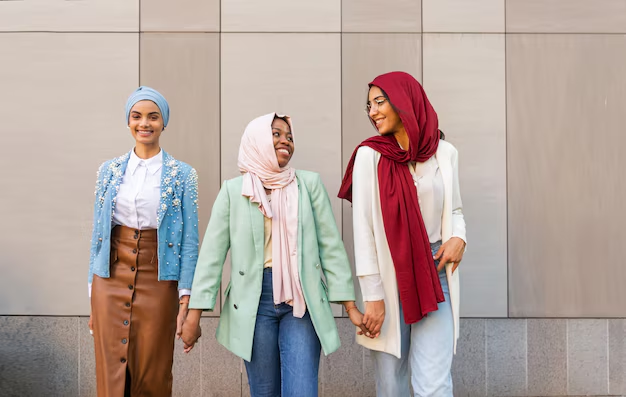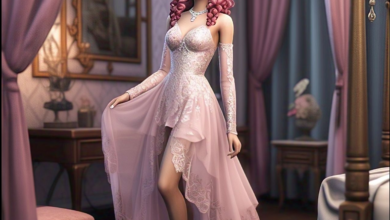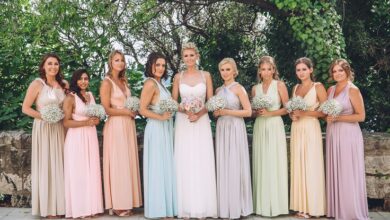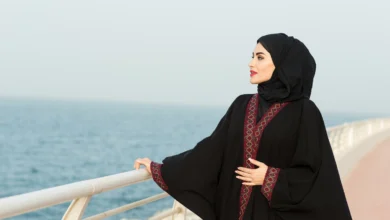Exploring Niswa Fashion: A Blend of Tradition and Modernity

What is Niswa Fashion?
Niswa fashion is an intriguing blend of traditional and modern styles that encapsulates the rich cultural heritage of the region it originates from. Born from a historical context where fabric and design were intertwined with local customs, Niswa fashion has evolved significantly over time, adapting to contemporary tastes while still honoring its roots. This unique representation of cultural identity showcases how traditional garments can be transformed into statements of modernity, appealing to both local and international audiences.
At its core, Niswa fashion is defined by key elements such as fabrics, colors, and patterns. The use of lightweight and breathable materials is prevalent, which not only ensures comfort but also allows for the intricate designs typical of the style. Traditional fabrics, often handwoven or dyed using age-old techniques, play a crucial role in defining the aesthetic qualities of Niswa fashion. Fabrics like cotton, silk, and synthetic blends are commonly employed, reflecting a balance between tradition and the conveniences of modern textile manufacturing.
The color palette within Niswa fashion is equally noteworthy, often inspired by the natural landscape. Earthy tones, vibrant hues, and subtle pastels are merged to create visually stunning pieces. Patterns can be simplistic or complex, with geometric designs and floral motifs serving as significant influences that resonate through various garment types, whether it be abayas, kaftans, or accessories. This versatility in style allows wearers to express their individuality while remaining connected to their cultural identity.
As Niswa fashion continues to gain traction both locally and internationally, it has attracted a diverse audience interested in cultural clothing. This phenomenon is indicative of a growing appreciation for the aesthetics and stories woven into these garments, highlighting the timeless nature of traditional attire when juxtaposed with modern influences.

Key Trends in Niswa Fashion
Niswa fashion has emerged as a vibrant amalgamation of traditional styles and modern influences, captivating the attention of fashion enthusiasts globally. Currently, several key trends are notably shaping the landscape of Niswa fashion. One prominent trend is the incorporation of traditional motifs and intricate embroidery into contemporary silhouettes. Designers are embracing cultural heritage while presenting garments that resonate with today’s aesthetic preferences.
Bright colors and bold patterns are at the forefront, with designers utilizing natural dyes to enhance the sustainability aspect of their collections. This movement not only elevates the visual appeal but also reflects a growing concern for the environment. Emerging designers are crucial in this evolution, as they redefine classic Niswa designs by introducing innovative cuts, new fabrics, and striking details. This fresh perspective is instrumental in bridging the gap between old-world charm and modern elegance.
Seasonal trends also play a significant role in shaping clothing choices within Niswa fashion. For instance, during festive seasons, heavier fabrics adorned with elaborate motifs become popular choices, while lighter, breathable materials are preferred in warmer months. These seasonal shifts guide consumers in selecting attire that is both fashionable and functional.
Furthermore, the importance of sustainable practices and ethical fashion is becoming increasingly recognized in Niswa fashion circles. Designers are sourcing materials from local artisans and promoting fair-trade practices, which not only support local economies but also preserve traditional craftsmanship. This commitment to sustainability enhances the appeal of Niswa fashion among conscious consumers who value ethically produced clothing. Overall, these trends encapsulate a dynamic interplay between tradition and modernity, making Niswa fashion a uniquely expressive fashion statement.
Influential Designers and Brands in Niswa Fashion
The Niswa fashion landscape is enriched by a multitude of designers and brands that seamlessly blend traditional and contemporary styles, ensuring the preservation of cultural heritage while catering to modern sensibilities. Among the prominent names is designer Amina Al-Mansoori, who focuses on sustainable practices, incorporating eco-friendly fabrics into her collections. Her designs reflect a deep appreciation for traditional craftsmanship, showcasing intricate embroidery and embellishments that tell stories of cultural significance. Al-Mansoori’s work not only elevates Niswa fashion but also promotes environmental consciousness, appealing to a growing audience of ethical consumers.

Another influential figure in this sphere is the design house Noor Couture, which has gained accolades for its innovative and elegant interpretations of classic attire. The brand’s philosophy revolves around empowering women through fashion, offering a range of products from everyday wear to opulent occasion gowns. Noor Couture’s collections often feature bold colors and modern cuts, yet they pay homage to traditional styles, allowing wearers to embrace their cultural identity while navigating contemporary fashion. Their recent collaboration with local artisans emphasizes the importance of preserving handmade techniques, further solidifying their commitment to the Niswa fashion movement.
Additionally, the emergence of collaborative projects within the Niswa fashion industry has fostered a vibrant community of creators. Designers from various backgrounds are coming together to showcase the potentials of their craft, resulting in collections that bridge cultural divides. Such partnerships not only elevate the profile of Niswa fashion but also create platforms for cultural exchange and appreciation among diverse audiences. Through these collaborations, brands are able to present a unified vision that celebrates tradition while embracing modern artistry, ensuring that the legacy of Niswa fashion continues to evolve.
Incorporating Niswa Fashion into Your Wardrobe
Integrating Niswa fashion into your wardrobe can elevate your style while allowing you to embrace cultural heritage. The key is to select specific pieces that resonate with your personal aesthetics, ensuring comfort and versatility. Essential items to consider include kaftans, abayas, and carefully chosen accessories. These staples can serve as the foundation of various outfits suited for both casual and formal occasions.
Kaftans are an excellent starting point for women looking to incorporate Niswa fashion into their everyday attire. They can be styled with a simple pair of jeans or tailored trousers for a more relaxed look, or with elegant skirts for formal events. The versatility of kaftans allows them to be dressed up or down, making them suitable for brunch dates or evening gatherings.
Abayas, traditionally worn for modesty, have been reinvented to include a variety of styles, colors, and fabrics. Consider investing in a beautifully embroidered abaya that can be paired with a chic clutch and statement jewelry for a lavish affair or adorned with sleek boots and a fitted top for a more casual appearance. This adaptability makes abayas a valuable addition to your collection.
Accessories also play a crucial role in defining your Niswa-inspired looks. Scarves, belts, and jewelry can seamlessly blend traditional motifs with contemporary designs, adding an extra layer of flair to your outfit. Opt for handmade pieces from local artisans to showcase unique craftsmanship while supporting community businesses.
When it comes to shopping for authentic Niswa fashion, consider visiting local markets and boutiques specializing in these traditional garments. This not only ensures you get genuine articles but also fosters local craftsmanship. Incorporating Niswa fashion into your wardrobe is not merely about aesthetics; it is about embracing a style that celebrates cultural roots while remaining modern and chic. Each piece has the potential to enhance your wardrobe and express your individuality.



